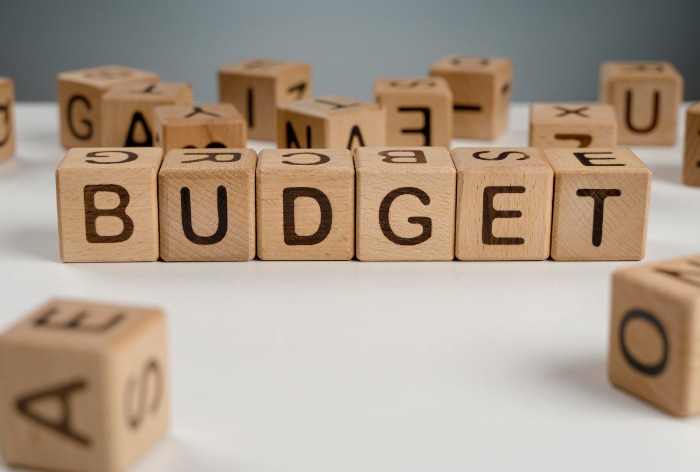What is the annual financial statement presented by the government outlining its revenue and expenditure for the upcoming fiscal year known as?
- a) Economic Survey
- b) Budget Estimate
- c) Union Budget
- d) Financial Outlook
- e) None of the above
This document provides an overview of the Indian economy, including key economic indicators and policy recommendations. Can you name it?
- a) Fiscal Policy
- b) Economic Vision
- c) Economic Outlook
- d) Economic Survey
- e) None of the above
What does the term “Fiscal Deficit” represent in the context of the Union Budget
- a) Excess of Expenditure over Revenue
- b) Excess of Revenue over Expenditure
- c) Total Revenue
- d) Total Expenditure
- e) None of the above
Which government body is responsible for preparing the Economic Survey of India?
- a) Reserve Bank of India (RBI)
- b) Ministry of Finance
- c) NITI Aayog
- d) Planning Commission
- e) None of the above
What is the primary objective of the Union Budget? Can you guess?
- a) Evaluate Economic Growth
- b) Allocate Resources
- c) Outline Fiscal Policy
- d) Assess Inflation
- e) None of the above
- f) All of the above
In the Economic Survey, what term is used to describe the difference between total revenue and total expenditure?
- a) Fiscal Gap
- b) Budgetary Allocation
- c) Revenue Receipts
- d) Budget Deficit
- e) None of the above
- f) All of the above
Which finance minister presented the first independent Union Budget of India post-independence?
- a) Morarji Desai
- b) Jawaharlal Nehru
- c) R. K. Shanmukham Chetty
- d) Manmohan Singh
- e) None of the above
- f) All of the above
What is the significance of the “Zero-based Budgeting” approach often mentioned in the Union Budget discussions?
- a) Baseline for Budgetary Allocation
- b) Starting with a Clean Slate
- c) Continuous Monitoring
- d) Dynamic Budget Planning
- e) None of the above
- f) All of the above
Which economic term refers to the total value of all goods and services produced within the country’s borders in a specific time period?
- a) National Income
- b) Gross Domestic Product (GDP)
- c) Net Exports
- d) Gross National Product (GNP)
- e) None of the above
- f) All of the above
What does the term “GDP growth rate” signify in the context of the Economic Survey?
- a) Rate of Inflation
- b) Rate of Interest
- c) Rate of Economic Expansion
- d) Rate of Fiscal Deficit
- e) None of the above
- f) All of the above
What is the purpose of the ‘Goods and Services Tax (GST)’ introduced in India, and how does it impact the Union Budget?
- a) Reducing Inflation
- b) Simplifying Tax Structure
- c) Increasing Exports
- d) Balancing Trade Deficit
- e) None of the above
- f) All of the above
Which document outlines the government’s economic policies, priorities, and financial allocations for various sectors in a detailed manner?
- a) Economic Vision Document
- b) Annual Economic Report
- c) Economic Survey
- d) Sectoral Development Plan
- e) None of the above
- f) All of the above
What is the significance of the “Revenue Budget” in the Union Budget?
- a) Capital Expenditure
- b) Day-to-Day Expenditure
- c) Long-Term Investments
- d) Deficit Financing
- e) None of the above
- f) All of the above
Which Union Budget introduced the concept of ‘Rolling Budgets’ in India?
- a) Budget 2000-01
- b) Budget 2015-16
- c) Budget 1991-92
- d) Budget 2005-06
- e) None of the above
- f) All of the above
What does the term “Disinvestment” mean in the context of the Union Budget?
- a) Investment in Social Sectors
- b) Selling Government Assets
- c) Funding Infrastructure Projects
- d) Allocating Resources
- e) None of the above
- f) All of the above
Which government body formulates the Union Budget in India?
- a) Ministry of Finance
- b) Planning Commission
- c) Reserve Bank of India (RBI)
- d) NITI Aayog
- e) None of the above
- f) All of the above
What economic term is used to describe the total value of all final goods and services produced within a country’s borders in a given year?
- a) Gross National Product (GNP)
- b) Net Domestic Product (NDP)
- c) Gross Domestic Product (GDP)
- d) National Income
Explain the concept of “Capital Expenditure” as mentioned in the Union Budget.
- a) Expenditure on Education and Healthcare
- b) Expenditure on Infrastructure and Assets
- c) Day-to-Day Operational Expenditure
- d) Interest Payments on Loans
Which article of the Indian Constitution deals with the presentation of the Union Budget?
- a) Article 114
- b) Article 265
- c) Article 112
- d) Article 280
In the Economic Survey, what does the term “Current Account Deficit” refer to?
- a) Excess of Exports over Imports
- b) Excess of Imports over Exports
- c) Fiscal Deficit in Current Year
- d) Trade Surplus in Current Year

